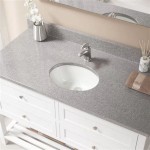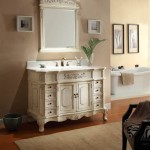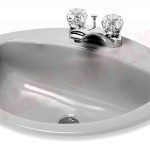Sea Blue Glass Tile Backsplash Bathroom Design: A Deep Dive
The bathroom, often considered a sanctuary of relaxation and rejuvenation, presents a unique canvas for design expression. Among the myriad options for enhancing its aesthetic appeal and functionality, the sea blue glass tile backsplash stands out as a particularly compelling choice. Its inherent reflectivity, combined with the calming and evocative nature of the color blue, can transform an ordinary bathroom into a spa-like retreat. This article will explore the various aspects of incorporating sea blue glass tile backsplashes into bathroom design, covering material considerations, design styles, installation techniques, and maintenance practices.
The selection of materials plays a pivotal role in the longevity and visual impact of any backsplash. Glass tiles, renowned for their durability and resistance to moisture, are ideally suited for bathroom environments. Sea blue, in its various shades and textures, offers a spectrum of design possibilities, from mimicking the tranquil depths of the ocean to reflecting the vibrant hues of a summer sky. Understanding the nuances of glass tile composition and manufacturing processes is crucial for making informed decisions about the suitability of the material for a specific bathroom design.
The design possibilities afforded by sea blue glass tiles are virtually limitless. They can be arranged in a multitude of patterns – from classic subway tile layouts to intricate mosaic designs – to create a backsplash that complements the overall aesthetic of the bathroom. Furthermore, the color itself interacts with light in a unique way, creating depth and visual interest that other materials may lack. Coordinating the backsplash with other bathroom fixtures, such as countertops, vanities, and hardware, is essential for achieving a cohesive and harmonious design.
Understanding Glass Tile Properties and Selection
Glass tiles, unlike ceramic or porcelain tiles, are non-porous, rendering them impervious to water absorption. This inherent resistance to moisture makes them an excellent choice for bathrooms, where humidity levels are typically high. The manufacturing process of glass tiles involves melting silica sand, along with other additives, at high temperatures. The molten glass is then shaped and colored, often using pigments and metal oxides to achieve the desired hue. The resulting tiles can vary in thickness, size, and texture, offering a diverse range of options for designers and homeowners.
The choice of glass tile should take into account several factors. First, the type of glass used can affect its translucency and reflectivity. Clear glass tiles, for example, allow more light to pass through, creating a brighter and more airy feel. Opaque glass tiles, on the other hand, offer greater color saturation and a more solid appearance. Second, the size and shape of the tiles will influence the overall design. Smaller mosaic tiles can be used to create intricate patterns, while larger format tiles offer a more streamlined and modern look. Finally, the surface texture of the tiles can add another dimension to the design. Textured glass tiles can provide a tactile element and enhance the light-reflecting properties of the backsplash.
When selecting sea blue glass tiles, it is important to consider the specific shade of blue. Lighter shades, such as aquamarine and sky blue, tend to create a more calming and serene atmosphere, while darker shades, such as navy blue and sapphire, can add depth and drama to the space. The choice of shade should be guided by the overall design concept and the desired mood for the bathroom. Additionally, it is advisable to order samples of different tiles to assess their color and texture in the actual lighting conditions of the bathroom.
The durability of glass tiles is generally high, but it is important to select tiles that are specifically designed for use in wet environments. Glass tiles that are rated for wet areas are typically thicker and more resistant to chipping and cracking. Furthermore, it is crucial to use a high-quality adhesive and grout when installing glass tiles to ensure a long-lasting and watertight seal. Careful attention to detail during the installation process is essential for preventing water damage and maintaining the aesthetic appeal of the backsplash over time.
Design Styles and Pattern Options with Sea Blue Glass Tile
The versatility of sea blue glass tiles allows them to be incorporated into a wide range of bathroom design styles, from traditional to contemporary. In a traditional bathroom, sea blue glass tiles can be used to create a classic subway tile backsplash, adding a touch of elegance and sophistication to the space. The tiles can be arranged in a standard horizontal layout or in a more decorative herringbone pattern. Coordinating the backsplash with other traditional elements, such as a clawfoot tub, pedestal sink, and vintage-inspired hardware, can create a cohesive and timeless design.
For a more modern bathroom, sea blue glass tiles can be used to create a sleek and minimalist backsplash. Large-format tiles, arranged in a simple grid pattern, can create a clean and uncluttered look. The tiles can be paired with contemporary fixtures, such as a floating vanity, a frameless shower enclosure, and minimalist hardware, to create a modern and sophisticated space. The reflective properties of the glass tiles can also help to brighten the bathroom and create a more open and airy feel.
Mosaic patterns offer even greater design flexibility. Small, irregularly shaped sea blue glass tiles can be used to create intricate and visually stunning backsplashes. These mosaic patterns can be used to create custom designs, such as geometric patterns, floral motifs, or even abstract art. The use of different shades of blue within the mosaic can add depth and dimension to the design. Mosaic backsplashes are particularly well-suited for accent walls or for creating a focal point in the bathroom.
Beyond patterns, grout color plays a significant role. Lighter grout colors will emphasize the individual tiles and create a more textured look, while darker grout colors will create a more seamless and unified appearance. The choice of grout color should be guided by the overall design concept and the desired aesthetic effect. Epoxy grout is often recommended for glass tile backsplashes, as it is non-porous and resistant to staining and mildew. Furthermore, epoxy grout is available in a wide range of colors, making it easy to find a shade that complements the sea blue glass tiles.
The placement of the backsplash is another important design consideration. A full backsplash, extending from the countertop to the ceiling, can create a dramatic and impactful look. A partial backsplash, extending only a few inches above the countertop, can provide a more subtle and understated accent. The height of the backsplash should be determined by the specific needs of the bathroom and the desired aesthetic effect. It is also important to consider the placement of electrical outlets and other fixtures when designing the backsplash.
Installation and Maintenance Considerations
The installation of a sea blue glass tile backsplash requires careful planning and execution. Proper surface preparation is essential for ensuring that the tiles adhere properly and remain securely in place. The surface should be clean, dry, and free of any loose debris. Any imperfections or irregularities in the surface should be repaired before installing the tiles. A thin-set mortar specifically designed for glass tiles should be used to adhere the tiles to the wall. The mortar should be applied evenly and in accordance with the manufacturer's instructions.
During the installation process, it is important to use a tile spacer to ensure consistent spacing between the tiles. This will create a uniform grout line and prevent the tiles from shifting during the drying process. A wet saw should be used to cut the tiles to the desired size and shape. The edges of the cut tiles should be smoothed to prevent sharp edges and ensure a clean finish. After the tiles have been installed, the grout should be applied using a grout float. The excess grout should be removed with a damp sponge. The grout should be allowed to cure for the recommended time before sealing.
Proper maintenance is essential for preserving the beauty and longevity of a sea blue glass tile backsplash. Regular cleaning with a mild detergent and water is typically sufficient to remove dirt and grime. Avoid using abrasive cleaners or scouring pads, as these can scratch the surface of the glass tiles. A soft cloth or sponge should be used to clean the tiles. Any spills or splatters should be wiped up immediately to prevent staining. The grout should be sealed periodically to prevent water absorption and mildew growth. A grout sealant specifically designed for use in wet environments should be used.
In addition to regular cleaning, it is important to inspect the backsplash periodically for any signs of damage. Chipped or cracked tiles should be replaced immediately to prevent water damage. Loose or crumbling grout should be repaired to maintain a watertight seal. By following these maintenance tips, homeowners can ensure that their sea blue glass tile backsplash remains beautiful and functional for many years to come.
Proper lighting design can further enhance the aesthetic appeal of a sea blue glass tile backsplash. Recessed lighting, strategically placed above the backsplash, can highlight the reflective properties of the glass tiles and create a more dramatic effect. Under-cabinet lighting can provide task lighting for countertop activities and add a warm and inviting glow to the space. Dimmable lighting allows homeowners to adjust the lighting levels to suit their needs and create different moods in the bathroom. The combination of sea blue glass tiles and carefully planned lighting can transform a bathroom into a truly relaxing and rejuvenating oasis.

Tst Glass Conch Tiles Beach Style Sea Blue Tile Green Mosaics Wall Art Kitchen Backsplash Bathroom Design Blujellyfish

Tst Glass Conch Tiles Beach Style Sea Blue Tile Green Mosaics Wall Art Kitchen Backsplash Bathroom Design Blujellyfish

Tst Glass Conch Tiles Beach Style Sea Blue Tile Green Mosaics Wall Art Kitchen Backsplash Bathroom Design Blujellyfish

Sea Glass Louvre Blue Mosaic Tile With Free On Qualifying Orders

Tst Glass Conch Tiles Beach Style Sea Blue Tile Green Mosaics Wall Art Kitchen Backsplash Bathroom Design Blujellyfish

Apollo Tile Sea Blue 11 9 In X Polished Glass Mosaic 4 92 Sq Ft Case Aplbr88042a The Home Depot

Tst Glass Conch Tiles Beach Style Sea Blue Tile Green Mosaics Wall Art Kitchen Backsplash Bathroom Design Blujellyfish

13 Baths Tiled In Beautiful Sea Glass Blue

Crystal Resin Conch Tile Kitchen Backsplash Bathroom Flooring Sea Blue Le Glass Bar Table Shower Wall Tiles Design Klgt18

13 Baths Tiled In Beautiful Sea Glass Blue
Related Posts







